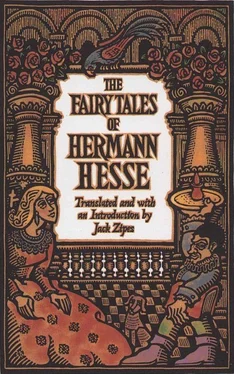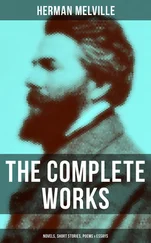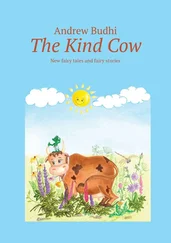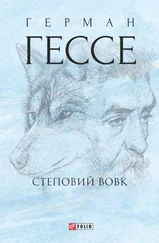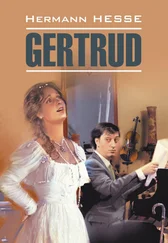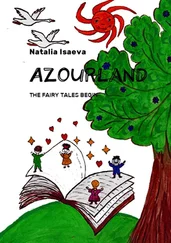Hermann Hesse - The Fairy Tales of Hermann Hesse
Здесь есть возможность читать онлайн «Hermann Hesse - The Fairy Tales of Hermann Hesse» весь текст электронной книги совершенно бесплатно (целиком полную версию без сокращений). В некоторых случаях можно слушать аудио, скачать через торрент в формате fb2 и присутствует краткое содержание. Год выпуска: 1995, ISBN: 1995, Издательство: Bantam Books, Жанр: Классическая проза, Сказка, на английском языке. Описание произведения, (предисловие) а так же отзывы посетителей доступны на портале библиотеки ЛибКат.
- Название:The Fairy Tales of Hermann Hesse
- Автор:
- Издательство:Bantam Books
- Жанр:
- Год:1995
- ISBN:9780553377767
- Рейтинг книги:5 / 5. Голосов: 1
-
Избранное:Добавить в избранное
- Отзывы:
-
Ваша оценка:
- 100
- 1
- 2
- 3
- 4
- 5
The Fairy Tales of Hermann Hesse: краткое содержание, описание и аннотация
Предлагаем к чтению аннотацию, описание, краткое содержание или предисловие (зависит от того, что написал сам автор книги «The Fairy Tales of Hermann Hesse»). Если вы не нашли необходимую информацию о книге — напишите в комментариях, мы постараемся отыскать её.
The Fairy Tales of Hermann Hesse — читать онлайн бесплатно полную книгу (весь текст) целиком
Ниже представлен текст книги, разбитый по страницам. Система сохранения места последней прочитанной страницы, позволяет с удобством читать онлайн бесплатно книгу «The Fairy Tales of Hermann Hesse», без необходимости каждый раз заново искать на чём Вы остановились. Поставьте закладку, и сможете в любой момент перейти на страницу, на которой закончили чтение.
Интервал:
Закладка:
A Note on the Texts

Most of Hesse’s fairy tales were printed in journals or newspapers before they appeared in book form. Only eight were gathered together for publication in Märchen (1919). Since he himself would have refused to categorize which of his tales were “truly” fairy tales, it would be foolish here to try to make clear-cut distinctions as to which of his narratives properly fit the genre. The present volume is an endeavor to collect as many of his tales as possible that were obviously associated with the modern fairy-tale tradition. Due to difficulties in obtaining permission for five of the tales, this is not a complete edition of Hesse’s fairy tales, but it is the first English edition to include the majority of them, many of which have never appeared in translation before.
The following bibliography lists the original German title, the journal or newspaper where it was first published, and the date of publication of each tale.
The Dwarf — Der Zwerg , first published as Donna Margherita und der Zwerg Filippo , in Die Rheinlande (1904)
Shadow Play — Schattenspiel , in Simplicissimus (1906)
A Man by the Name of Ziegler — Ein Mensch mit Namen Ziegler , in Simplicissimus (1908)
The City — Die Stadt , in Licht und Schatten (1910)
Dr. Knoegle’s End — Doktor Knögles Ende , in Jugend (1910)
The Beautiful Dream — Der schöne Traum , in Licht und Schatten (1912)
The Three Linden Trees — Drei Linden , in Die Alpen (1912)
Augustus — Augustus , in Die Grenzboten (1913)
The Poet — Der Dicker , first published as Der Weg zur Kunst , in Der Iag(I9I3)
Flute Dream — Flötentraum , first published as Märchen , in Licht und Schatten (1914)
A Dream About the Gods — Ein Iraum von den Göttern , in Jugend (1914)
Strange News from Another Planet — Merkwürdige Nachricht von einem anderen Stern , in Neue Zürcher Zeitung (1915)
Faldum — Faldum , first published as Das Märchen von Faldum , in Westermanns Monatshefte (1916)
A Dream Sequence — Fine Traumfolge , in Die weissen Blätter (1916)
The Forest Dweller — Der Waldmensch , first published as Kubu , in Simplicissimus (1917)
The Difficult Path — Der schwere Weg , in Die Neue Rundschau (1917)
If the War Continues — Wenn der Krieg noch zwei Jahre dauert , first published as Im Jahre 1920 , in Neue Zürcher Zjeitung (1917)
The European — Der Europäer , in Neue Zürcher Zeitung (1918)
The Empire — Das Reich , in Neue Zürcher Zeitung (1918)
The Painter — Der Maler , in Vossische Zeitung (1918)
The Fairy Tale About the Wicker Chair — Märchen vom Korbstuhl , in Wieland (1918)
Iris — Iris , in Die Neue Rundschau (1918)
THE FAIRY TALES OF HERMANN HESSE

The Dwarf
(1904)

One evening down on the quay the old storyteller Cecco began telling the following tale—
If it is all right with you, ladies and gentlemen, I shall tell you a very old story about a beautiful lady, a dwarf, and a love potion, about fidelity and infidelity, love and death, all that is at the heart of every adventure and tale, whether it be old or new.
Signorina Margherita Cadorin, daughter of the nobleman Batista Cadorin, was in her day the most beautiful among all the beautiful women of Venice. The poems and songs dedicated to her were more numerous than the curved bay windows of the palaces on the Grand Canal and more plentiful than the gondolas that swim between the Ponte del Vin and the Ponte della Dogana on a spring evening. Hundreds of young and old lords from Venice and Murano, and just as many from Padua, could not close their eyes for a single night without dreaming about her; nor could they wake up the next morning without yearning for a glimpse of her. Moreover, there were few among the fine young ladies in the entire city who had not been jealous of Margherita Cadorin at one time or another. Since it is impossible for me to describe her, I shall content myself with saying that she was blond, tall, and slender like a young cypress, that her hair flattered the air, and the soles of her feet, the ground, and that Titian, when he saw her, is said to have wished that he could spend an entire year and paint nothing and nobody but this woman.
With regard to clothes, lace, Byzantine gold brocade, precious stones, and jewels, the beautiful signorina lacked nothing. On the contrary, her palace was rich and splendid. The oriental rugs were thick and colorful. The closets contained plenty of silver utensils. The tables glistened with their fine damask and glorious porcelain. The floors of the rooms were filled with beautiful mosaics, and the ceilings and walls were covered partially with Gobelin tapestries made of brocade and silk, and partially with bright and attractive paintings. In addition, there were plenty of gondolas and gondoliers.
Of course, all these expensive and pleasant things could also be found in other houses. There were larger and richer palaces than hers, more abundantly filled closets, more expensive utensils, rugs, and jewels. At that time Venice was very wealthy, but young Margherita possessed a gem all to herself that was the envy of many people richer than she. It was a dwarf by the name of Filippo, a fantastic little fellow, just about three feet tall with two humps on his back. Born in Cyprus, Filippo could speak only Greek and Syrian when Vittoria Battista brought him home one day from a trip. Now, however, he spoke such a pure Venetian dialect that it seemed as if he had been born on the Riva or in the parish of San Giobbe. As beautiful and slender as his mistress was, the dwarf was just that ugly. If she stood next to his crippled figure, she appeared doubly tall and majestic, like the tower of an island church next to a fisherman’s hut. The dwarf’s hands were wrinkled, brown, and bent at the joints. His gait was unspeakably ridiculous; his nose, much too large; his feet, wide and pigeon-toed. Yet when dressed, he walked like a prince garbed in pure silk and gold.
Just this outward appearance made the dwarf a gem. It was perhaps impossible to find anyone who cut a figure stranger and more comical, not only in Venice but in all of Italy, including Milan. And many a royal king, prince, or duke would certainly have been glad to pay gold for the little man, if he had been for sale.
Now there may have indeed been dwarfs just as small and ugly as Filippo at certain courts or in rich cities, but he was far superior to them with regard to brains and talent. If everything depended on intelligence alone, then this dwarf could easily have had a seat on the Council of Ten or been head of an embassy. Not only did he speak three languages, but he also had a great command of history and was clever at inventing things. He was just as good at telling old stories as he was at creating new ones, and he knew how to give advice, play mean tricks, and make people laugh or cry, if he so desired.
On pleasant days, when Margherita sat on her balcony to bleach her wonderful hair in the sun, as was generally the fashion at that time, she was always accompanied by her two chambermaids, her African parrot, and the dwarf Filippo. The chambermaids moistened and combed her long hair and spread it over a large straw hat to bleach it. They sprayed it with the perfume of roses and Greek water, and while they did this, they told her about everything that was happening or about to happen in the city: the deaths, the celebrations, the weddings, births, thefts, and funny incidents. The parrot flapped its beautifully colored wings and performed its three tricks: It whistled a song, bleated like a goat, and cried out, “Good night!” The dwarf sat there, squatting motionless in the sun, and read old books and scrolls, paying very little attention to the gossip of the maids or to the swarming mosquitoes. Then on each of these occasions, after some time had passed, the colorful bird would nod, yawn, and fall asleep; the maids would chatter ever more slowly and gradually turn silent and finish their chores quietly with tired gestures, for is there a place where the noon sun burns hotter or makes one drowsier than on the balcony of a Venetian palace? Yet the mistress would become sullen and give the maids a good scolding if they let her hair become too dry or touched it too clumsily. Finally the moment would arrive when she cried out, “Take the book away from him!”
Читать дальшеИнтервал:
Закладка:
Похожие книги на «The Fairy Tales of Hermann Hesse»
Представляем Вашему вниманию похожие книги на «The Fairy Tales of Hermann Hesse» списком для выбора. Мы отобрали схожую по названию и смыслу литературу в надежде предоставить читателям больше вариантов отыскать новые, интересные, ещё непрочитанные произведения.
Обсуждение, отзывы о книге «The Fairy Tales of Hermann Hesse» и просто собственные мнения читателей. Оставьте ваши комментарии, напишите, что Вы думаете о произведении, его смысле или главных героях. Укажите что конкретно понравилось, а что нет, и почему Вы так считаете.
